The old axiom of ‘only run the minimum deck size’ is well ingrained in TCG culture. Less cards means less to get through in search of your best cards - or put another way, the ‘worst card in your deck’ is of lower and lower quality the deeper you venture into the available card pool. Behind this lies a value with much wider applications to deckbuilding, and one that many don’t give enough consideration to: consistency.
For a fascinating examination of applying the value of consistency to a deck steeped in RNG, check out Clay DeAngelis’ Rolling with Rhinar.
As a principle, consistency is about avoiding valleys at the possible expense of peaks. You can apply it to cards drawn, damage threatened, and blocking; it minimizes decision-making on your part, so you can focus on your opponent’s plays. And it usually plays the long game, sacrificing battles for the sake of the war.
Today I’d like to look at how a prioritization of consistency can manifest in several classes, from equipment selection to card choices and even pitch curve. We’ll wrap it up with the pros and cons of building for consistency - and some signs that your gameplay might benefit from adopting a more consistency-based posture.
Consistency in Dromai
I approached this topic out of a desire to write about Dromai; but lacking a well-tested deck or an exciting new take on the class, I instead took inspiration from the lore and the player base’s curious alignment with the cliffhanger Dynasty left us with. With the Emperor fallen, will Dromai find her opportunity to seize power in Volcor? Will she take up the Crown of Dominion and the power that comes with it?
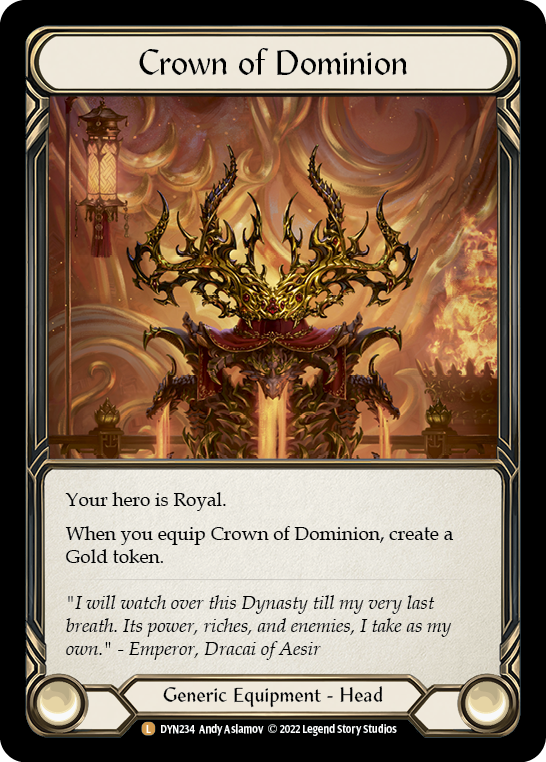
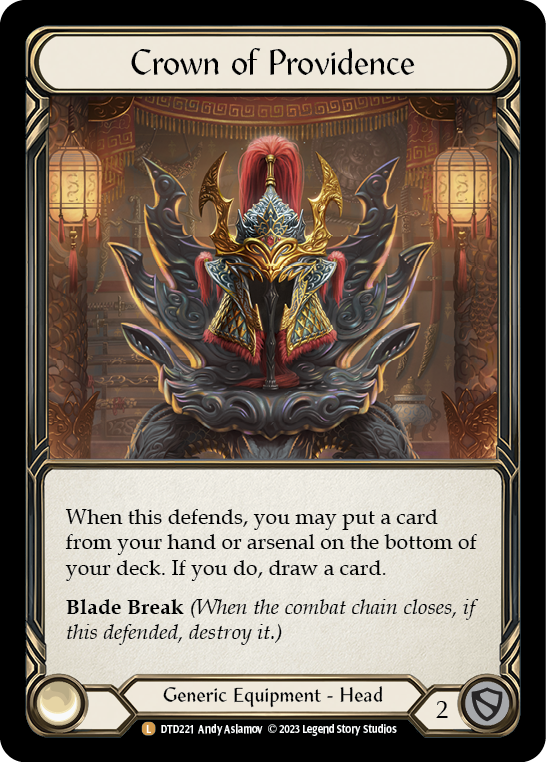
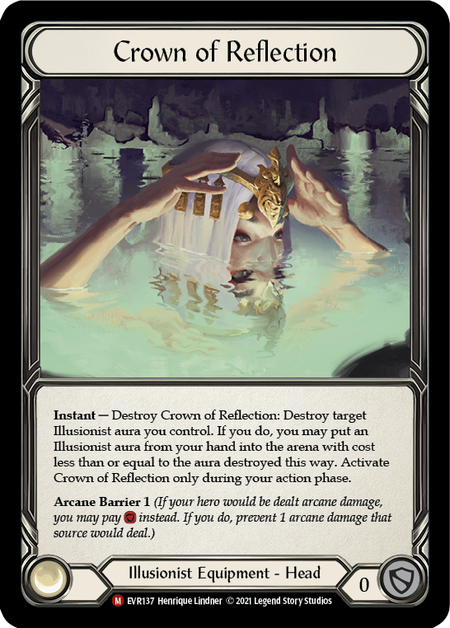
When considering which crown to equip - for truly, Dromai is meant to be crowned - you’re essentially deliberating between a peak turn and avoiding a valley turn. The Crown of Providence is an excellent way to accelerate into a massive turn, blocking for 2 while converting a card in arsenal into a 5th card in hand (this being the optimal outcome for a Crown of Providence turn). In contrast, the Crown of Dominion starts you with a Gold token on board - a pitch outlet that can be used to rescue Dromai from a handful of Invocations with no ash in reserve.
The specifics of your decklist will push you toward one crown or the other. For those of us who know the pain of a Turn 0 with no play, or have found our endgame stymied by a vacant supply of ash, consistency improvements begin at the equipment. If, by contrast, you’re built for wide, aggressive attack patterns that skew toward the Draconic end of your Draconic Illusionist affiliation, you may find more value in the extra gas Providence provides.

Lacking the legendaries to relate to this discussion? You’re not out of options. There are several equipment pieces that provide outlets for pitching - a reliable way to cycle dead weight and begin generating ash again, beginning with the humble Ironhide pieces. You might also adjust your decklist to include more 1-cost cards, especially those with no need for preexisting ash or previously played red cards.
A dragon-based gameplan thrives with consistency assured, due to the fact that each dragon represents long-term tactical gain that snowballs as your board state improves. The more reliably you can put allies on the board, the more pressure you place on your opponent to remove them.
Consistency in Azalea
Many of you have seen my recent dissertation on the Sandscour Greatbow, but it nonetheless serves as a great example of how consistency in “draw” can give you gameplay that mimics ‘dumb luck’. Much has been said about the inferiority of Immobilizing Shot when compared to Red in the Ledger, but as Red is widely regarded as the best specialization in the game (tempered by being tied to the “worst” hero in the game), wouldn’t you gladly play it every single turn? This is the same philosophy behind card cycles in FaB: if you want to run more copies of your best card, you have to accept minor downgrades in subsequent copies.
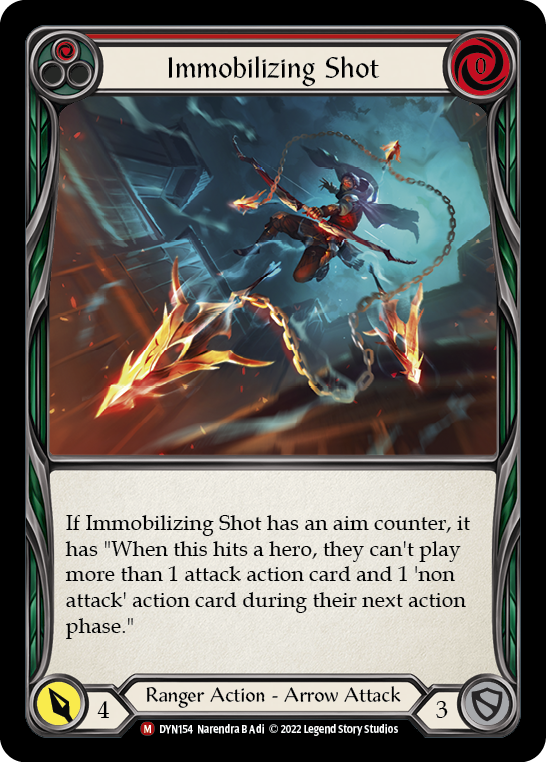
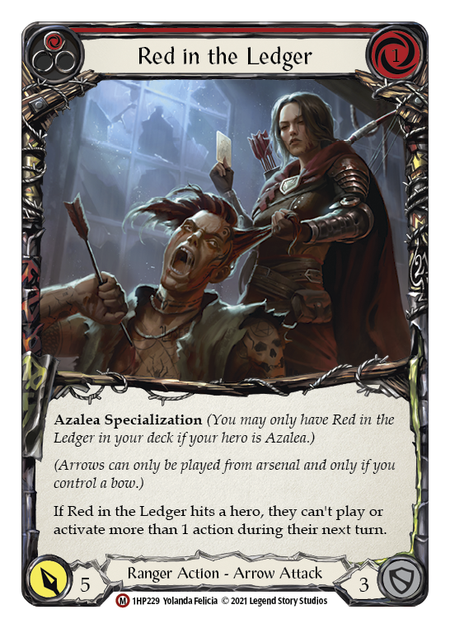
If we were talking about any other hero, Immobilizing Shot would have a stronger reputation; but as Azalea is already exceptional at consistency in card draw, it’s largely seen as unnecessary. 3 copies of Red in the Ledger - plus 3 copies of Nock the Deathwhistle and 3 copies of Memorial Ground - are already enough to ensure you can find and fire that arrow 6 times in a game. Opponents who aren’t used to the consistency Azalea can manifest will often lay the blame at the feet of lady luck, when in fact your deck is just doing what it was built to do
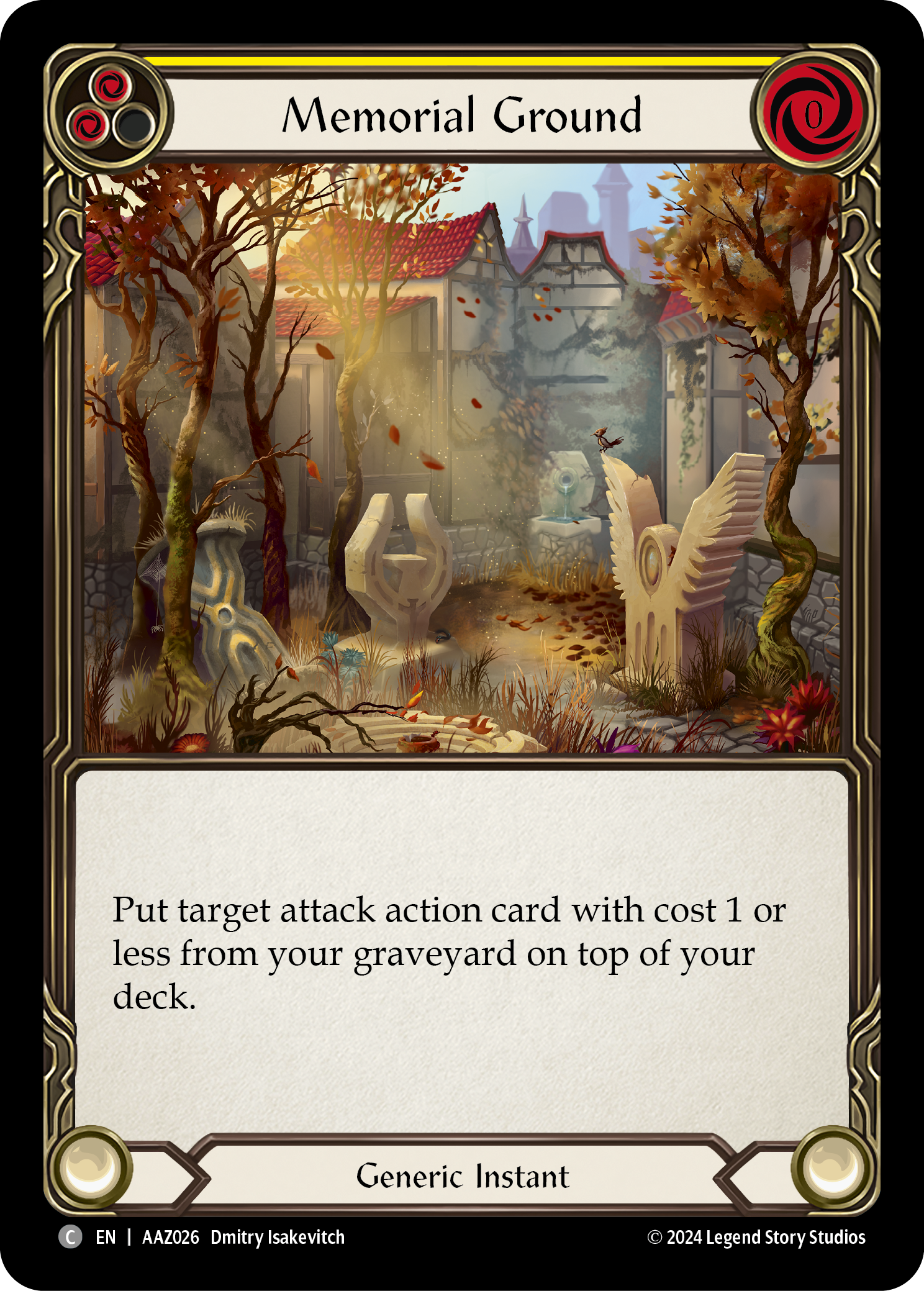
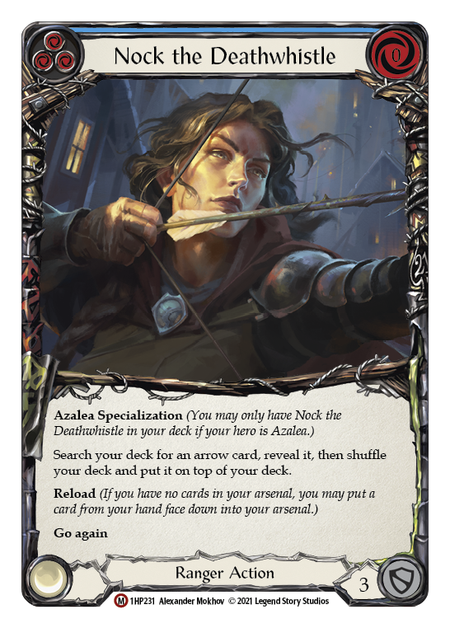
What continues to plague novice Rangers is the ratios. Too many arrows, and you’re flooded with low-damage attacks that you can’t utilize in a single turn. Too few, and you find your arrow-based synergies failing. In this case, consistency must be found in a careful balance of card types - and in viewing arrows as multi-purpose cards. As the best-blocking cards in the Ranger card pool (short of their numerous defense reactions, most of dubious merit), an abundance of arrows lets you weather an inferior hand while you seek out the perfect disruption tools.
Alternatively, you can put more energy into curating your hand. The aforementioned Sandscour Greatbow, along with an abundance of Opting tools, let you cycle through your deck faster and filter through cards that don’t fit your short-term gameplan. With the Greatbow equipped, you can afford to run less arrows, so long as the cards you replace them with can keep you alive while you search.
Consistency in Bravo
There is, perhaps, no class so consistent as Guardian, the home of blue pitch and hammer swings. These decks tend to treat their weapon as their primary means of attack (for a discussion on weapon roles, you can check out my article here), fueling their turns with a steady stream of pitched cards that sustain them deep into the game.
Guardians also have some of the most impressive damage numbers in the game. Their red attacks regularly reach double digits; and when combined with Bravo’s own hero ability or Pummel, they can devastate the opponent’s life total and/or ability to return fire the following turn.
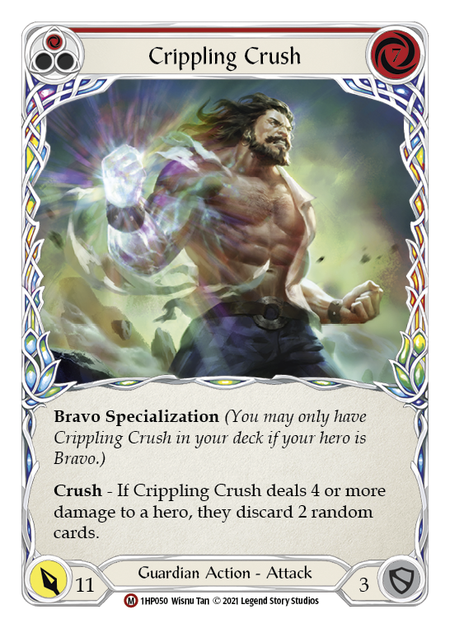

Where I’ve seen Bravo players come up short is in consistency related to pitch. Their eyes get big looking at those juicy hits, while their pitch curve modulates toward an average 2 value. This leaves you with dud hands that let your opponent score hits on you and hurt your ability to play for the late game. Consistency in this case comes from keeping a tight leash on the power spikes!
This is doubly true if you’re leaning heavily into Pummel. Not only is this card expensive to play, it also cannot be played on its own; and if you’re forced to defend with it, you’re only blocking for 2. Ironically, Pummel turns your blue attacks into real threats - so you don’t need those red attacks nearly as much as you would without it.
Decreasing your Pummel count is, counterintuitively, a great way to improve your consistency without really decreasing the impact of Pummel. After you’ve dropped that attack reaction once, your opponent will be inclined to play turns as if every hidden card in hand or arsenal is another copy of Pummel. In effect, you’re getting mileage out of it even if you never see a 2nd copy!
Consistency is one of the major strategic advantages that Guardians bring to the table. Don’t undermine that without a compelling reason!
Consistency in Fai
Even a class that relies on power spikes needs consistency. While Fai wins games on the backs of 5-card hands and big rupture payoffs, he survives that long by continuing to present threatening cards and chip damage even when his hand doesn't line up. Through his weapons and constant access to Phoenix Flame, he can avoid losing momentum even when he's forced to block.

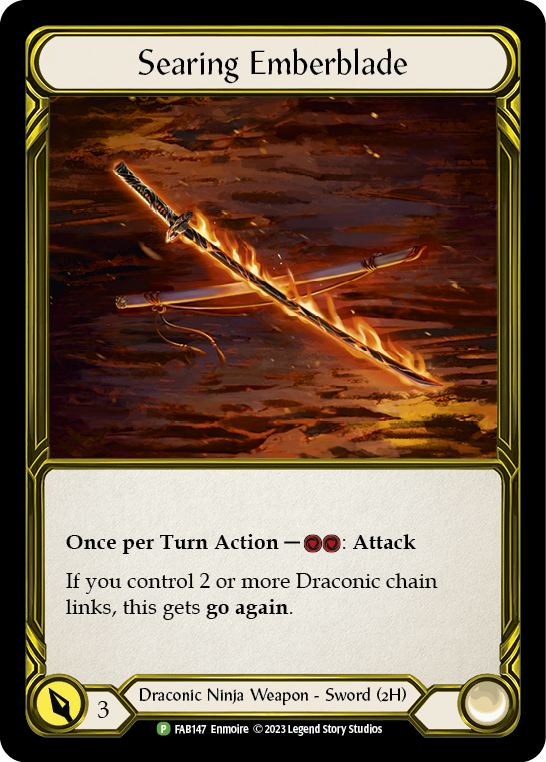
When attempting to make your Fai deck more consistent, the goal is not to change his strategy and water down his peak turns. Instead, you want to create a safe baseline: attack patterns that you can create off a single attack action and a blue pitch. Even presenting a 3 (attack from hand) 3 (Emberblade) 1 (Phoenix Flame) requires 2 cards and an equipment to block out fully; and any damage they leak lowers the bar you need to clear when you do go supernova.
Is Consistency the Answer?
When I’m playing a few rounds at my local Armory, I’m especially watching for consistency shortcomings on both sides of the table. For most of us, getting a win in any single game is much less important than an overall record of wins over losses. Those big combo wins with 50+ damage from Kano may make a great story, but if it comes after 2 losses it’s not worth a whole lot.
Often, a deck begins with a flashy idea. Your goal, however, is to build a whole deck around that idea. High variance, or reliance on a certain combination to be drawn together, is inviting failure; if you want to play for peaks, you need a solid plan to move you through the valleys.
- Do you find yourself drawing into the cards you spent the whole game looking for, but now you're too far behind for it to matter?
- Do you have good turns that keep the game competitive, and bad turns that lose it?
- Do you have that one guy who always seems to come back after you’ve thrown your biggest haymakers?
Consistency is a factor in all of those - and by focusing more on making your deck dependable, you can avoid the devastating crashes that your opponents are exploiting to steal games from you.
Power bursts are great, but slow and steady wins the race.




